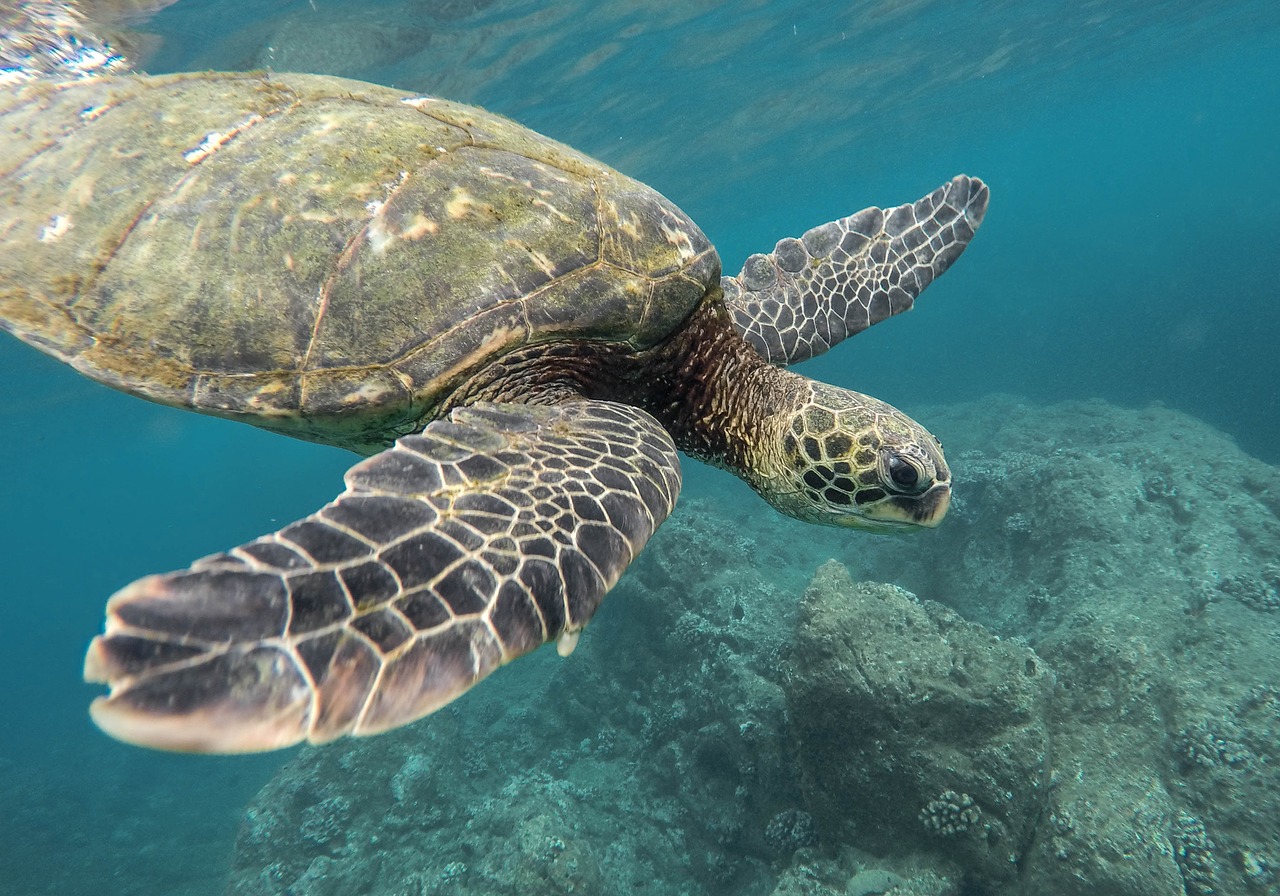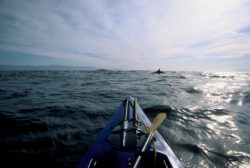
Your Pre-Trip Course to Responsible Wildlife Viewing in Sanctuaries

Kayaking in Channel Islands National Marine Sanctuary. Photo: Chuck Graham
The National Marine Sanctuary System offers a fantastic array of experiences, from whale watching to fishing to diving and more. While a marine adventure is a sure bet for vacation fun, though, it is important to respect the ecosystems with which you interact.
According to the National Oceanic and Atmospheric Administration, “irresponsible human behavior can disturb animals, destroy important habitats, and even result in injury to animals and people.” Luckily, with the right approach, you can avoid all of these potential dangers and still have a great experience! Here’s a quick pre-trip crash course to ensure your interactions with wildlife are safe for you, for flora and fauna, and for our national marine sanctuaries as a whole.
1. Do Not Feed the Wildlife
It’s tempting to feed marine birds or mammals like you might ducks at the park. Don’t. The food you give them is almost certainly not a part of their natural diet, and can cause discomfort or even illness. Plus, protecting the balance of the sanctuary system means keeping animals in their native eating areas, not drawing them to human activity for food. (P.S. You probably shouldn’t feed ducks, either.)
2. Do Not Chase or Harass Wildlife
We never want to make an animal feel nervous or in danger in their home. While approaching a flock of birds or group of mammals might make for a better Kodak moment, it can stress animals out and make their homes feel unsafe. Bring binoculars and cameras with zoom lenses, and keep a respectful distance.
3. Steer Clear of Sick Wildlife
The temptation to help a cute and evidently sick seal can be strong, but resist. Instead of “checking on” or “comforting” a marine mammal or bird in distress, pick up the phone and call a local expert such as a park ranger or sanctuary official. It may turn out that the animal is just resting and your approach may startle it.
4. Keep Pets Away from Sanctuaries
Dogs carry diseases that may be harmful to wildlife. Similarly, wildlife such as fish may transmit diseases to your animals, which you they then carry home and infect other animals. Plus, pets may spook or be spooked by wildlife. If you do choose to travel with your pet, it’s important to keep them on a leash and away from areas known to be frequented by marine wildlife.
5. Never Touch Wildlife
The “steer clear” approach goes for marine flora and fauna as well as sick animals. While touching a fish or anemone might seem like a neat experience for kids, you can harm animals by doing so. Plus, not all animals are safe – some plants, animals, and coral can sting or burn. When you snorkel or dive, explain the rules to children ahead of time: No touching, no matter what.
6. Help Educate Others
If you see other people acting in ways that harm sanctuaries – whether intentional or not – let them know there’s a better way to engage with wildlife. Some people will not seem receptive to your instruction at the time, but they will most likely follow your advice in future. Even if it isn’t fun, it’s important to do your part by speaking up.
With these tips in mind, it’s time to pick your next marine destination. With more than 620,000 square miles and sanctuaries ranging from Cape Cod to the Florida Keys, from the Olympic Coast to American Samoa, our marine sanctuaries provide incredible opportunities to see wildlife in their natural environment. Want to know more? Click here to learn more about a specific site in the National Marine Sanctuary System or here for NOAA’s complete Ocean Etiquette guidelines.
